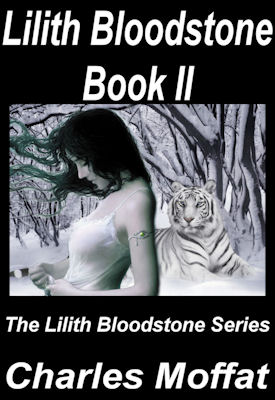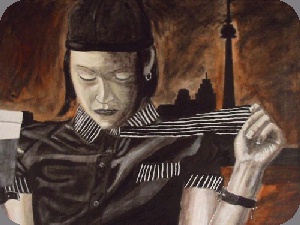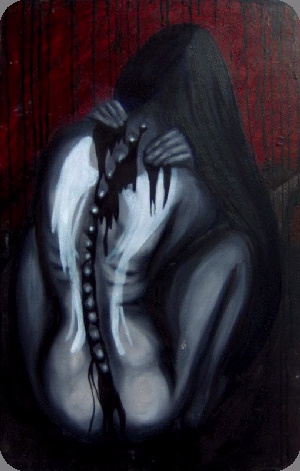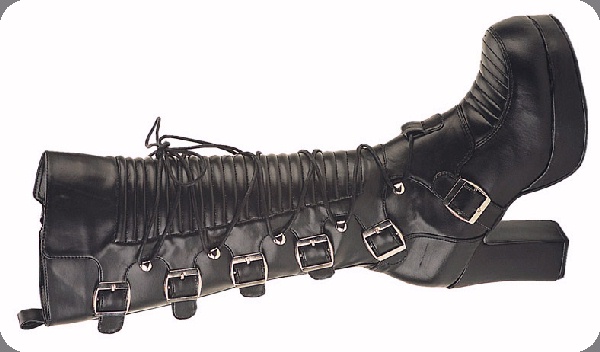 |
||||||||
|
|
||||||||
|
Get your Freak On!The Gothic eZine is dedicated to exploring alternative culture, fashion, fantasy/horror, existentialism, alternative religion (ie. paganism and wicca), sexuality, and all things gothic! Enjoy your stay!
Gothic Art
Gothic Books
Gothic Dance
Gothic Fashion
Gothic Culture, Myth & News
Gothic Movies and Music
Hell Hounds
Heroes in Hell is a series of shared world fantasy books, within the genre Bangsian horror/fantasy, created and edited by Janet Morris and written by her, Chris Morris, C. J. Cherryh and others. The first 12 novels in the saga were published by Baen Books between 1986 and 1989, and stories from the series include both Hugo Award winners and Nebula Award nominees. The series was resurrected in 2011 by Janet Morris with the thirteenth book and eighth anthology in the series, Lawyers in Hell, followed by six more anthologies and two novels between 2012 and 2016. Keep reading by visiting Hell Hounds, A Gothic Adventure ...
The Lilith Bloodstone Series takes
|
|
|||||||
Is Goth Dead?By Monique Bellamont - May 2014. There are a plethora of other sub-cultures that now exist in North America. Emo. Vamps. Trench Coat Hosers. Steampunk. Cyberpunk. Gone is the late 90s / early 2000s heyday of goth when Marilyn Manson was still embedded in the social subconscious and in the minds of every parent who thought their teenager was wearing too much black and becoming too existential. No, now parents have different worries - like "Is my kid trying to emulate Justin Bieber?" More than just the haircut that makes him look like k.d. lang, parents now have many other worries and goth teenagers is not a top priority any more. What has happened since the decline of goth culture has not been a removal of it. Goths are still out there. The goth shops in Toronto are all - or almost all - gone. Instead the businesses have moved online and many goths are now older, wiser, and have credit cards, a mortgage and rising / falling debt. The point is they have money - and they can spend it online and order clothing and other goth accessories online as they see fit. Although I admit, I much prefer being in an actual store where one can browse. Especially when it comes to corsets and boots. It helps to be able to try things on physically. However there are sometimes one or two teens in a school who choose to go the goth route. Emo and other sub-cultures are not for them. This has made goth even more rare - and arguably even more elitist, as goth attracts the most intellectual, non-conformist group of conformists (we all wear black...?) who ever dared to call themselves existentialists. So is goth dead? Non, mon cherie. Nous sommes plus ιlitiste que jamais. (No, my sweetheart. We are more elitist than ever.)
The Future of Gothic Culture: A Continuation of Dark Beauty and Subversive ExpressionBy Chaz G. T. Patto - June 2023. Gothic culture, with its distinctive aesthetic, music, fashion, and subcultural identity, has captured the imagination of individuals worldwide for decades. While its origins can be traced back to the late 1970s and early 1980s, gothic culture continues to evolve and find new expressions in the modern era. This article explores the future of gothic culture, envisioning its ongoing influence and its potential to embrace new forms of creativity and subversive expression. Evolving Aesthetics and Artistic Expression: The future of gothic culture lies in the evolution of its aesthetics and artistic expression. Gothic art and design have always been known for their dark and moody atmosphere, drawing inspiration from themes of horror, romanticism, and the macabre. As technology advances, we can expect gothic artists to embrace new mediums such as digital art, immersive installations, and interactive experiences to create captivating and thought-provoking works. Moreover, gothic culture has always celebrated individuality and nonconformity. In the future, we may witness the fusion of gothic aesthetics with other subcultures and genres, resulting in innovative and boundary-pushing expressions of art, fashion, and music. Digital Communities and Global Connectivity: The advent of the internet and social media has revolutionized subcultural communities, allowing gothic culture to transcend geographical boundaries. Online platforms provide spaces for gothic enthusiasts to connect, share their passions, and collaborate creatively. The future of gothic culture will likely see an even greater interconnectedness, with digital communities fostering global collaboration and the exchange of ideas. Virtual events, streaming concerts, and online marketplaces enable gothic artists, musicians, and fashion designers to reach a wider audience. This digital landscape opens doors for the creation of immersive virtual experiences and innovative collaborations that push the boundaries of gothic expression. Sustainability and Ethical Practices: As society becomes more aware of the environmental and social impacts of consumerism, the future of gothic culture may embrace sustainable and ethical practices. Conscious fashion choices, such as upcycling, repurposing, and using eco-friendly materials, can align with gothic aesthetics and values. The gothic community may champion independent designers who prioritize ethical production methods and support local craftsmanship. Moreover, gothic culture has long celebrated individualism and non-conformity, which can extend to questioning societal norms and advocating for social justice. The future of gothic culture may involve more active participation in social and environmental causes, using its platform to raise awareness and promote positive change. Intersectionality and Inclusivity: Gothic culture has always thrived on embracing diverse identities, experiences, and perspectives. The future of gothic culture will likely continue to emphasize intersectionality and inclusivity. This means welcoming individuals of all backgrounds, genders, and ethnicities into the gothic community and amplifying their voices and creative contributions. The promotion of inclusivity will enrich gothic culture by fostering a more diverse range of experiences, aesthetics, and narratives. It will challenge stereotypes and create a more inclusive and supportive environment for all who identify with or are drawn to gothic culture. Final Thoughts: The future of gothic culture holds exciting possibilities for artistic expression, digital connectivity, sustainability, and inclusivity. As technology advances, gothic aesthetics will find new forms of expression, embracing digital mediums and immersive experiences. Sustainable and ethical practices will align with gothic values, contributing to a more conscious and responsible approach to fashion and consumption. Furthermore, gothic culture will continue to celebrate individuality and nonconformity while embracing intersectionality and inclusivity, creating a community that welcomes diverse identities and perspectives. With its enduring allure and subversive spirit, gothic culture will thrive and inspire future generations to embrace their unique darkness and create their own paths of artistic expression and self-discovery.
|
||||||||
|
|
||||||||












